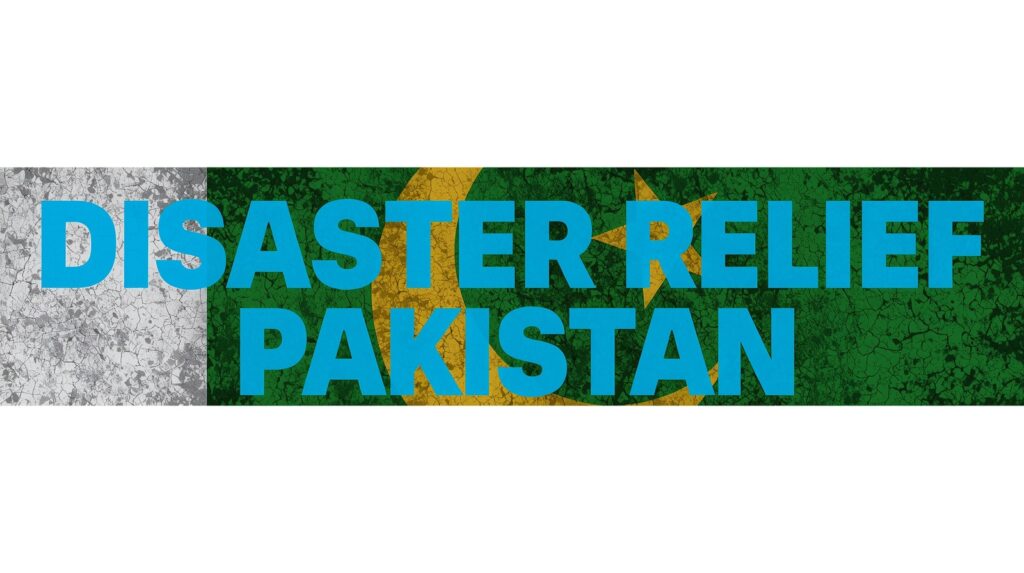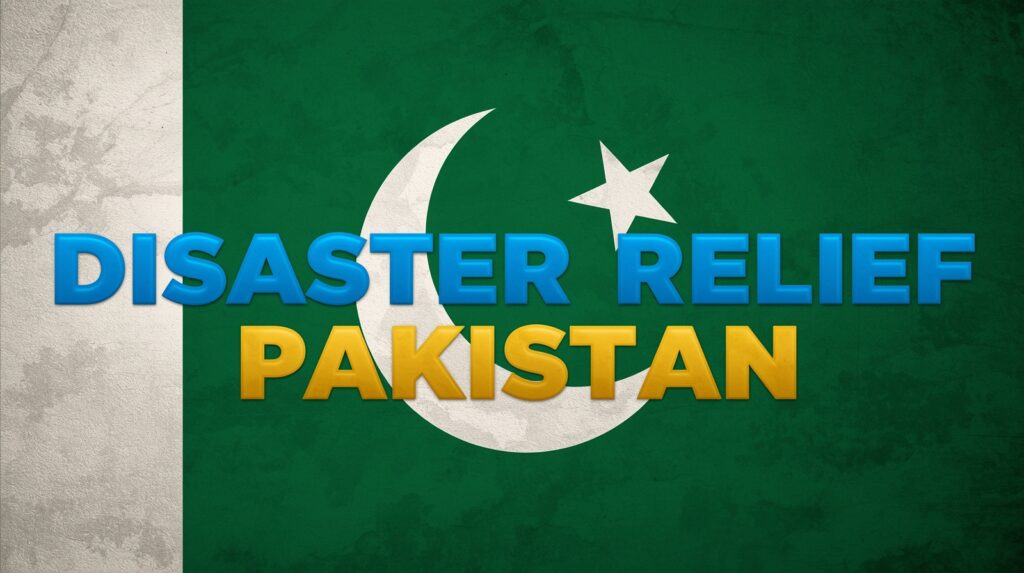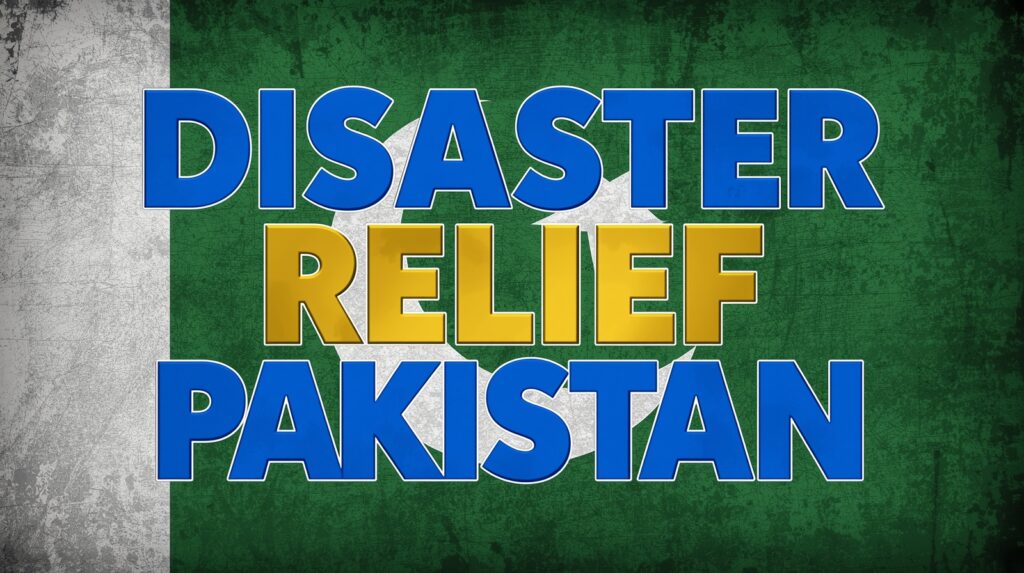Pakistan has beautiful landscapes, from tall mountains to wide plains, but it is also a place where natural calamities happen a lot. Floods, earthquakes, droughts, and landslides happen every year, and millions of Pakistanis have to deal with them. Disasters have gotten bigger in the last few years, mostly because of climate change and bad infrastructure. So, the need for disaster relief in Pakistan has never been greater. Disaster management is no longer a choice; it is necessary for survival and strength.

Understanding What Disasters Are Like in Pakistan
Pakistan is in a part of the world where natural disasters happen all the time. The 2022 and 2025 floods, for example, have proven how climate change can magnify monsoon rains, displacing millions of people and ruining crucial agricultural land. Earthquakes, like the deadly 2005 Kashmir quake, still haunt the country’s memory, while droughts continue to plague Sindh and Balochistan’s poorest regions.
These disasters often lead to loss of lives, devastation of homes, and disruption of livelihoods. Rural communities suffer the most owing to insufficient infrastructure, limited access to emergency services, and lack of preparedness. It is apparent that disaster relief operations need to be rapid, well-coordinated, and inclusive.
The Role of the Government in Disaster Relief
The Government of Pakistan has taken many initiatives to improve disaster relief and management over the years. The founding of the National Disaster Management Authority (NDMA) and provincial disaster management agencies was an important milestone. The NDMA’s mandate includes planning, coordinating, and executing national policies for disaster risk reduction and response.
During recent floods, the NDMA coordinated with the Pakistan Army, provincial governments, and humanitarian organizations to deliver food, tents, and medical assistance to affected communities. The Pakistan Meteorological Department (PMD) also plays a significant role by providing early warnings about monsoon rains and potential flood conditions.
However, issues persist. Delays in response, lack of coordination among departments, and limited financing often reduce the effectiveness of these efforts. Strengthening the NDMA and local disaster management authorities is vital for long-term resilience.
Humanitarian Organizations and Community Support
When calamity strikes, Pakistan’s strong civil society and humanitarian organizations surge forward. Groups like the Edhi Foundation, Saylani Welfare Trust, Akhuwat Foundation, and Alkhidmat Foundation have become household names in disaster relief. Their volunteers reach devastated areas swiftly, delivering food, water, clothes, and medicines to individuals in need.
International organizations such as the United Nations, World Food Programme (WFP), UNICEF, and Red Crescent also play vital roles. Their financial and technical support supports local relief operations, providing immediate housing and helping with long-term rehabilitation.
Equally crucial is the role of ordinary citizens. From social media fundraisers to local contribution drives, Pakistanis constantly demonstrate extraordinary camaraderie during emergencies. This communal compassion is one of the country’s greatest qualities.

Technology and Innovation in Disaster Relief
In recent years, Pakistan has started embracing technology-driven disaster management. Satellite imaging, drones, and digital mapping tools now enable authorities monitor floods, track affected people, and plan evacuation routes. Early warning systems, powered by mobile notifications and AI-based weather predictions, are saving lives by giving communities more time to prepare.
Moreover, digital banking platforms like Easypaisa and JazzCash are being used to provide financial relief directly to victims’ mobile wallets, ensuring transparency and timeliness. These technologies reflect a beneficial transition from traditional paper-based procedures toward a more efficient and responsible relief process.
Challenges in Disaster Relief Operations
Despite advances, many difficulties remain prevent efficient disaster aid in Pakistan.
- Infrastructure Weakness: Poorly designed roads, bridges, and housing make it difficult to access impacted districts promptly.
- Limited Preparedness: Many communities remain unaware of catastrophe risk management procedures, leaving them susceptible.
- Coordination Gaps: Overlapping responsibilities among government bodies can delay response efforts.
- finance Shortages: Relief operations generally depend on emergency international aid rather than sustainable domestic finance.
Climate Change Impact
- Increasing temperatures and irregular rainfall patterns are exacerbating disasters, making recovery more difficult each year. Addressing these concerns demands not only government reform but also strong community participation and international cooperation. Building a Resilient Future To make Pakistan disaster-resilient, a transition from reaction to prevention is essential. Disaster management should not start after a crisis—it should begin far before. The focus must be on disaster risk reduction (DRR), community education, and climate adaption techniques. Schools and municipal institutions should include awareness programs that teach kids how to respond during earthquakes, floods, and fires. Urban planning needs to provide suitable drainage systems and flood-resistant structures. Meanwhile, rural populations should receive instruction in emergency preparedness, including how to secure food, water, and shelter during emergencies. Pakistan may also learn from global best practices. Countries like Japan and Bangladesh have proved that early warning systems, tight building rules, and community-based preparedness can greatly minimize catastrophe effect. Collaboration with such countries can help Pakistan develop localized answers. International Cooperation and Aid The international community has played an important role in supporting Pakistan during major disasters. The World Bank, Asian Development Bank (ADB), and UNDP have supported recovery initiatives and helped reconstruct key infrastructure. However, long-term collaborations should focus on capacity building rather than only emergency relief. This involves upgrading data systems, developing skilled rescue teams, and enabling local enterprises to produce relief items domestically.

Conclusion
- : A Nation of Resilience and Hope Pakistan’s path through innumerable natural disasters has shown both its vulnerabilities and its strengths. While the obstacles are immense—ranging from inadequate resources to the looming threat of climate change—the resiliency of its people shines through every crisis. From government institutions to humanitarian organizations, from the Pakistan Army to regular citizens—each plays a key position in the country’s disaster assistance ecosystem. With greater coordination, contemporary technology, and sustainable planning, Pakistan may convert its response system into one of the most successful in the region. Disaster assistance in Pakistan is not just about saving lives during calamities; it’s about constructing a better, stronger, and more compassionate future for generations to come.


